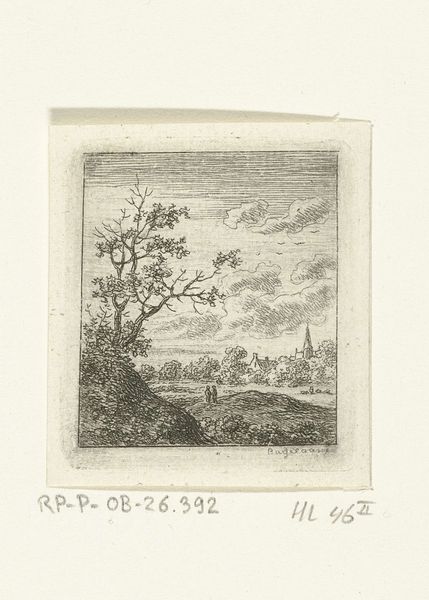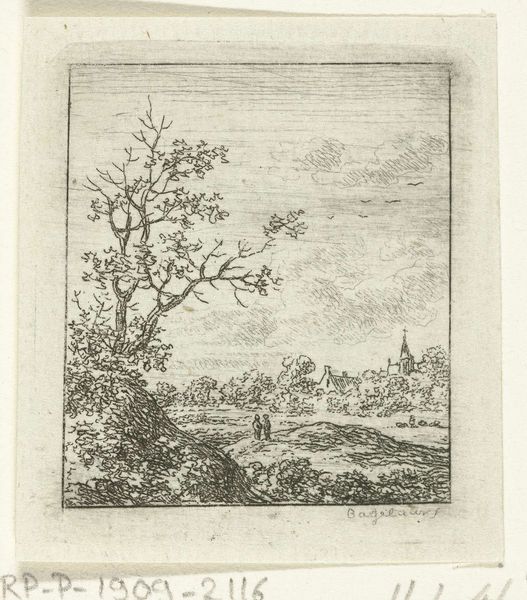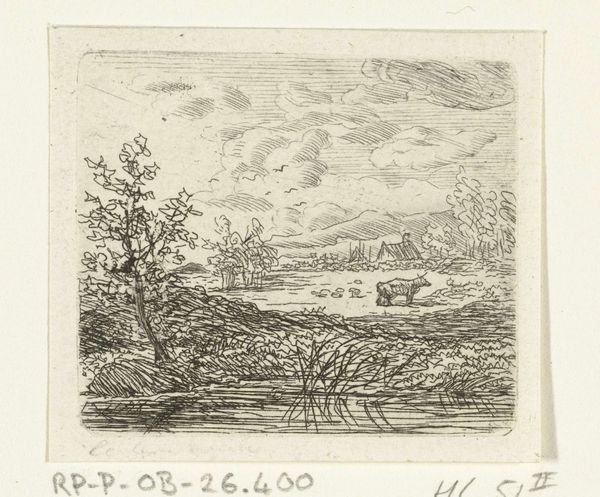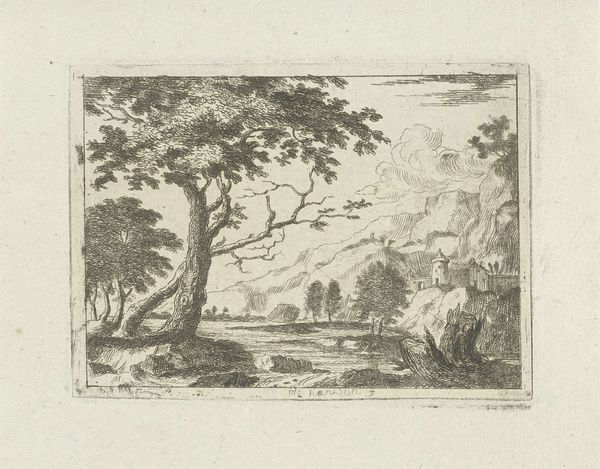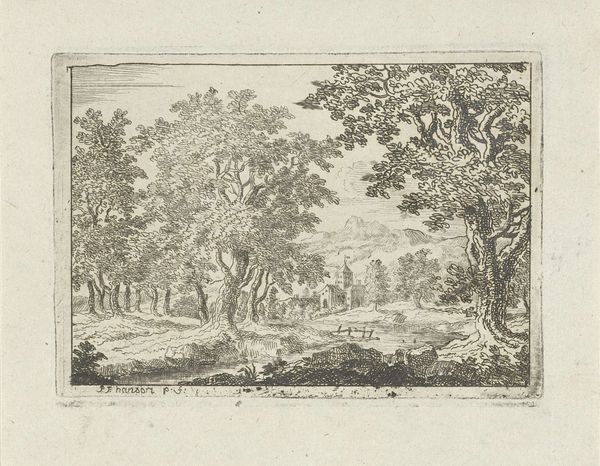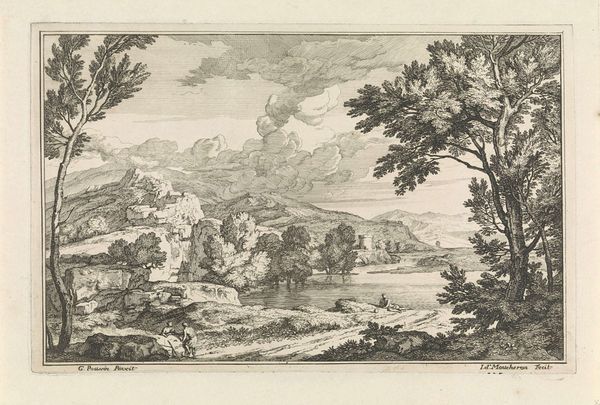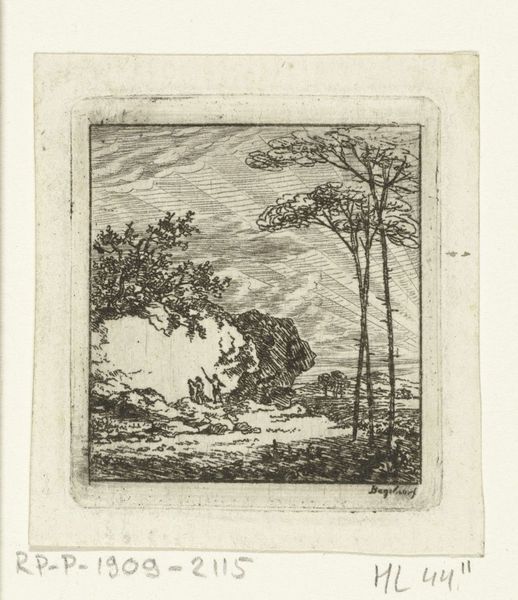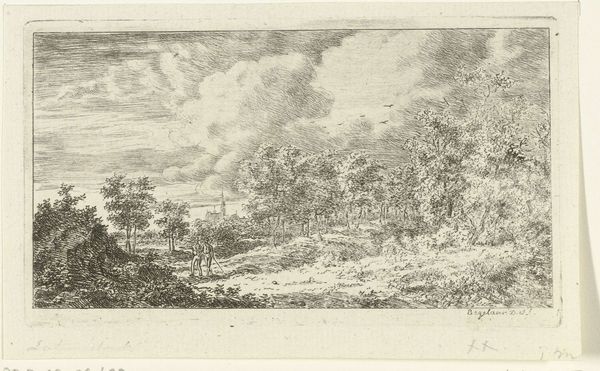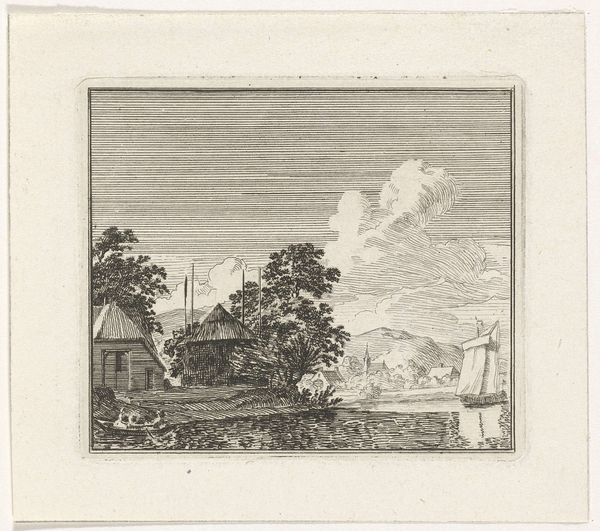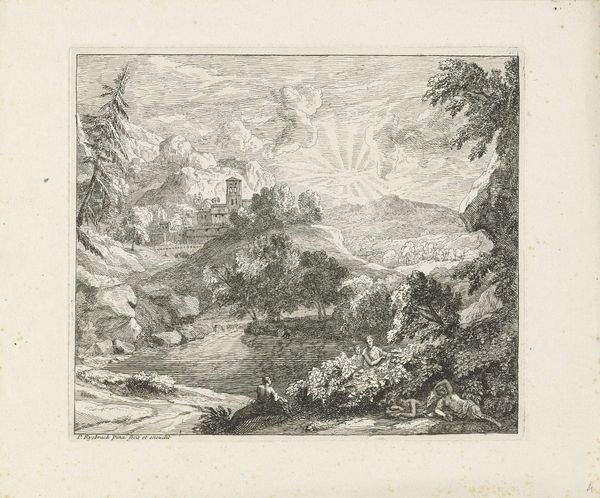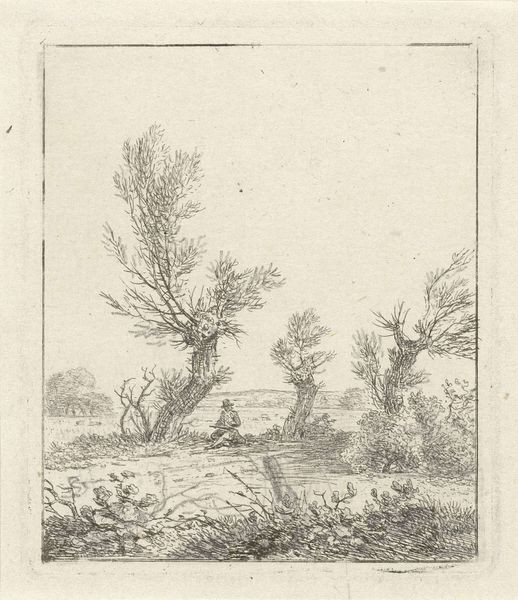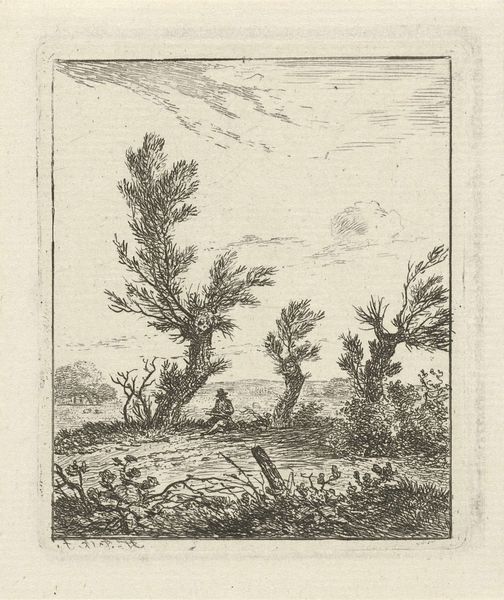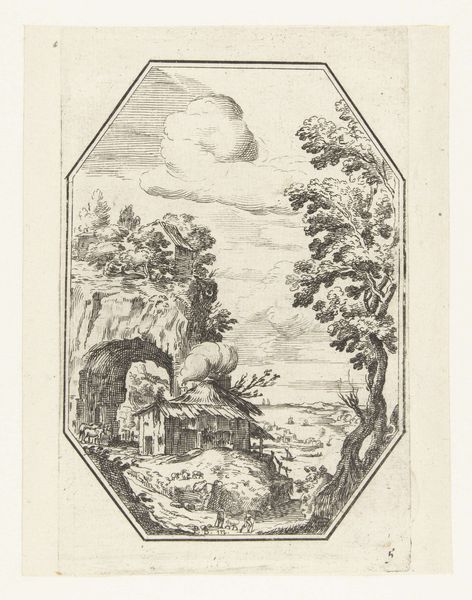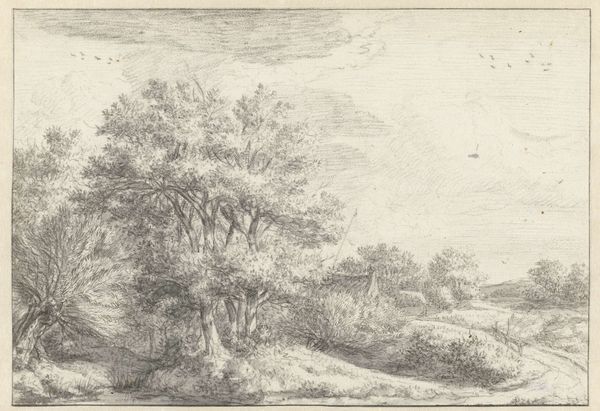
etching, engraving
#
etching
#
landscape
#
etching
#
romanticism
#
line
#
engraving
Dimensions: height 50 mm, width 45 mm
Copyright: Rijks Museum: Open Domain
Editor: This is Ernst Willem Jan Bagelaar's "Landschap met wandelend stel", which translates to "Landscape with Walking Couple," made sometime between 1798 and 1837 using etching and engraving. I’m struck by the incredible detail created with just lines; it's delicate and evokes a sense of quiet contemplation. How do you interpret this work? Curator: I see it as a window into the burgeoning Romantic movement and its social implications. Landscape art like this was becoming increasingly popular as industrialization altered the landscape. Consider the figures; their presence anchors the composition but also highlights the idea of humanity observing, even perhaps owning, nature. Editor: Owning, how so? Curator: Think about the historical context. Land ownership, especially after the French Revolution, was a powerful concept tied to social status. These strolling figures are engaging with a landscape increasingly understood as property, not just a shared resource. And this is translated in how Bagelaar has placed this figures in the lower corner almost watching what belongs to them, in a relaxed, private contemplation. What do you think this means at the turn of the century? Editor: That's fascinating! I hadn’t considered the connection between land ownership and Romantic landscapes. So, is the etching a form of social commentary, perhaps? Curator: In a way, yes. It participates in the romantic idealization of nature while implicitly reflecting evolving social and economic structures. These landscapes served as powerful ideological tools, reinforcing certain relationships between people and the land. Look at the location where they stand: in a very relaxed position; therefore the whole scenery becomes their property. It is a subliminal language that empowers a particular message through the imagery portrayed. Editor: That really broadens my perspective on landscape art. I always saw it as simply pretty, but you’ve shown me that it can also be deeply political. Thank you for making me understand its historical importance. Curator: Absolutely! Looking at art through the lens of social and cultural history always enriches our understanding of it.
Comments
No comments
Be the first to comment and join the conversation on the ultimate creative platform.
